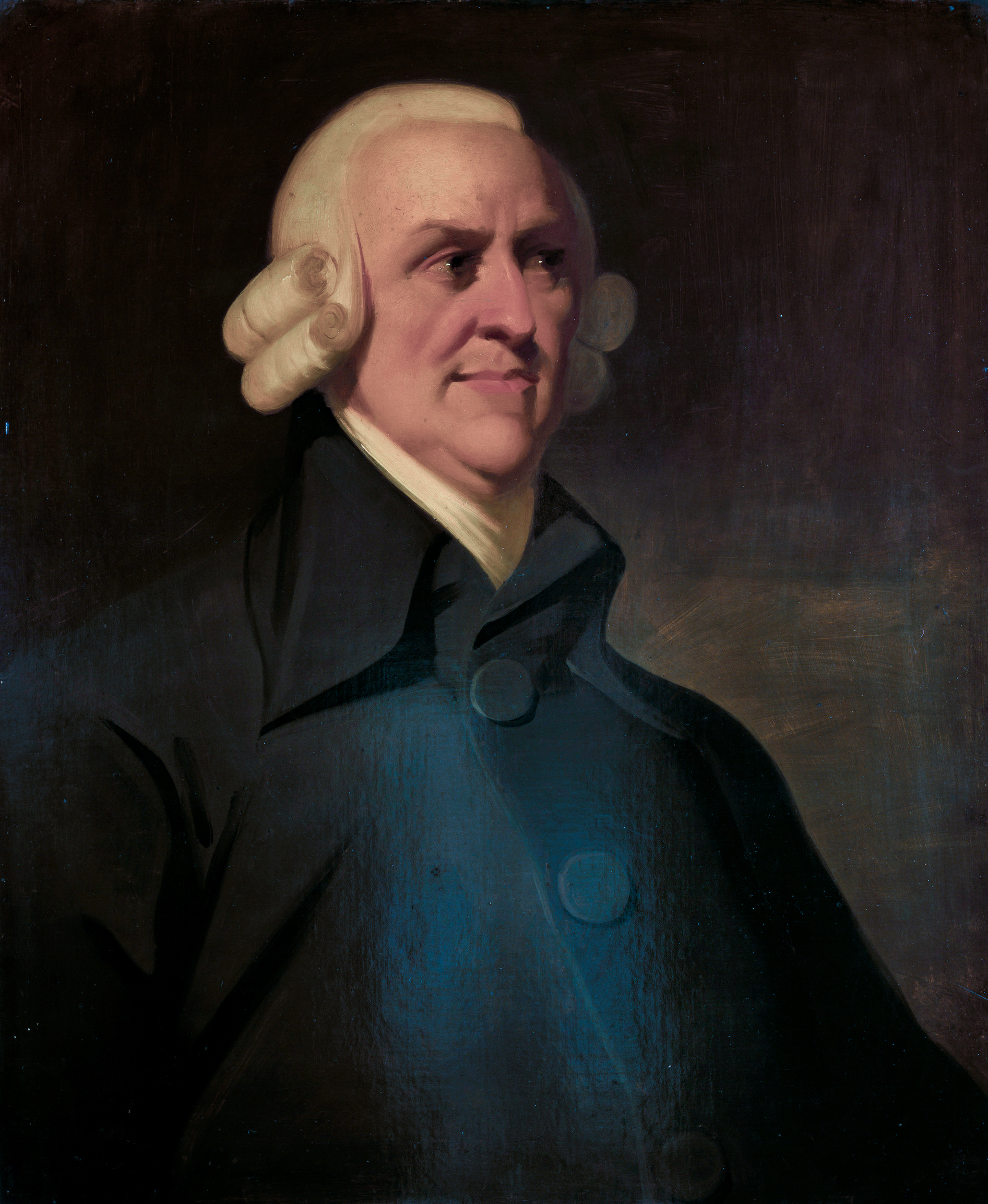|
Anchoring (cognitive Bias)
The anchoring effect is a psychological phenomenon in which an individual's judgments or decisions are influenced by a reference point or "anchor" which can be completely irrelevant. Both numeric and non-numeric anchoring have been reported through research. In numeric anchoring, once the value of the anchor is set, subsequent arguments, estimates, etc. made by an individual may change from what they would have otherwise been without the anchor. For example, an individual may be more likely to purchase a car if it is placed alongside a more expensive model (the anchor). Prices discussed in negotiations that are lower than the anchor may seem reasonable, perhaps even cheap to the buyer, even if said prices are still relatively higher than the actual market value of the car. Another example may be when estimating the orbit of Mars, one might start with the Earth's orbit (365 days) and then adjust upward until they reach a value that seems reasonable (usually less than 687 days, the c ... [...More Info...] [...Related Items...] OR: [Wikipedia] [Google] [Baidu] |
Orbit Of Mars
Mars has an orbit with a semimajor axis of 1.524 astronomical units (228 million km) (12.673 light minutes), and an orbital eccentricity, eccentricity of 0.0934.Jean Meeus, ''Astronomical Formulæ for Calculators''. (Richmond, VA: Willmann-Bell, 1988) 99. Elements by F. E. Ross The planet orbits the Sun in 687 days and travels 9.55 AU in doing so,Jean Meeus, ''Astronomical Algorithms'' (Richmond, VA: Willmann-Bell, 1998) 238. The formula by Ramanujan is accurate enough. making the average orbital speed 24 km/s. The eccentricity is greater than that of any other planet except Mercury, and this causes a large difference between the Apsis, aphelion and perihelion distances—they are respectively 1.666 and 1.381 AU.; Mean Anomaly (deg) 19.412 = (Mean Longitude (deg) 355.45332) – (Longitude of perihelion (deg) 336.04084) Changes in the orbit Mars is in the midst of a long-term increase in eccentricity. It reached a minimum of 0.079 about 19 millennia ago, and wi ... [...More Info...] [...Related Items...] OR: [Wikipedia] [Google] [Baidu] |
Cognitive Biases
A cognitive bias is a systematic pattern of deviation from norm or rationality in judgment. Individuals create their own "subjective reality" from their perception of the input. An individual's construction of reality, not the objective input, may dictate their behavior in the world. Thus, cognitive biases may sometimes lead to perceptual distortion, inaccurate judgment, illogical interpretation, and irrationality. While cognitive biases may initially appear to be negative, some are adaptive. They may lead to more effective actions in a given context. Furthermore, allowing cognitive biases enables faster decisions which can be desirable when timeliness is more valuable than accuracy, as illustrated in heuristics. Other cognitive biases are a "by-product" of human processing limitations, resulting from a lack of appropriate mental mechanisms (bounded rationality), the impact of an individual's constitution and biological state (see embodied cognition), or simply from a limited c ... [...More Info...] [...Related Items...] OR: [Wikipedia] [Google] [Baidu] |
Behavioral Economics
Behavioral economics is the study of the psychological (e.g. cognitive, behavioral, affective, social) factors involved in the decisions of individuals or institutions, and how these decisions deviate from those implied by traditional economic theory. Behavioral economics is primarily concerned with the bounds of rationality of economic agents. Behavioral models typically integrate insights from psychology, neuroscience and microeconomic theory. Behavioral economics began as a distinct field of study in the 1970s and 1980s, but can be traced back to 18th-century economists, such as Adam Smith, who deliberated how the economic behavior of individuals could be influenced by their desires. The status of behavioral economics as a subfield of economics is a fairly recent development; the breakthroughs that laid the foundation for it were published through the last three decades of the 20th century. Behavioral economics is still growing as a field, being used increasingly in ... [...More Info...] [...Related Items...] OR: [Wikipedia] [Google] [Baidu] |
Framing Effect (psychology)
Framing may refer to: * Framing (construction), common carpentry work * Framing (law), providing false evidence or testimony to prove someone guilty of a crime * Framing (social sciences) * Framing (visual arts), a technique used to bring the focus to the subject * Framing (World Wide Web), a technique using multiple panes within a web page * Pitch framing, a baseball concept * Timber framing, a traditional method of building with heavy timbers See also * Frame synchronization, in telecommunications * Frame of reference, a coordinate system * Frame (other) * Framed (other) * Framing device, a narrative tool * Framework (other) * Inertial frame of reference In classical physics and special relativity, an inertial frame of reference (also called an inertial space or a Galilean reference frame) is a frame of reference in which objects exhibit inertia: they remain at rest or in uniform motion relative ..., describes time and space homogeneousl ... [...More Info...] [...Related Items...] OR: [Wikipedia] [Google] [Baidu] |
Bandwagon Effect
The bandwagon effect is a psychological phenomenon where people adopt certain behaviors, styles, or attitudes simply because others are doing so. More specifically, it is a cognitive bias by which public opinion or behaviours can alter due to particular actions and beliefs rallying amongst the public. It is a psychological phenomenon whereby the rate of uptake of beliefs, ideas, fads and trends increases with respect to the proportion of others who have already done so. As more people come to believe in something, others also "hop on the bandwagon" regardless of the underlying evidence. Following others' actions or beliefs can occur because of conformism or deriving information from others. Much of the influence of the bandwagon effect comes from the desire to 'fit in' with peers; by making similar selections as other people, this is seen as a way to gain access to a particular social group. An example of this is fashion trends wherein the increasing popularity of a certain ... [...More Info...] [...Related Items...] OR: [Wikipedia] [Google] [Baidu] |
Confirmation Bias
Confirmation bias (also confirmatory bias, myside bias, or congeniality bias) is the tendency to search for, interpret, favor and recall information in a way that confirms or supports one's prior beliefs or Value (ethics and social sciences), values. People display this bias when they select information that supports their views, ignoring contrary information or when they interpret ambiguous evidence as supporting their existing attitudes. The effect is strongest for desired outcomes, for emotionally charged issues and for deeply entrenched beliefs. Biased search for information, biased interpretation of this information and biased memory recall, have been invoked to explain four specific effects: # ''attitude polarization'' (when a disagreement becomes more extreme even though the different parties are exposed to the same evidence) # ''belief perseverance'' (when beliefs persist after the evidence for them is shown to be false) # the ''irrational primacy effect'' (a greater relia ... [...More Info...] [...Related Items...] OR: [Wikipedia] [Google] [Baidu] |
Law Of The Instrument
The law of the instrument, law of the hammer, Maslow's hammer, or golden hammer is a cognitive bias that involves an over-reliance on a familiar tool. Abraham Maslow wrote in 1966, "it is tempting, if the only tool you have is a hammer, to treat everything as if it were a nail." The concept is attributed both to Maslow and to Abraham Kaplan, although the hammer and nail line may not be original to either of them. History The English expression "a Birmingham screwdriver", meaning a hammer, refers to the practice of using the one tool for all purposes, and predates both Kaplan and Maslow by at least a century. In 1868, a London periodical, '' Once a Week'', contained this observation: "Give a boy a hammer and chisel; show him how to use them; at once he begins to hack the doorposts, to take off the corners of shutter and window frames, until you teach him a better use for them, and how to keep his activity within bounds." Kaplan The first recorded statement of the concept wa ... [...More Info...] [...Related Items...] OR: [Wikipedia] [Google] [Baidu] |
Negotiation
Negotiation is a dialogue between two or more parties to resolve points of difference, gain an advantage for an individual or Collective bargaining, collective, or craft outcomes to satisfy various interests. The parties aspire to agree on matters of The Impact of Religion on International Negotiations, mutual interest. The agreement can be beneficial for all or some of the parties involved. The negotiators should establish their own needs and wants while also seeking to understand the wants and needs of others involved to increase their chances of closing deals, avoiding conflicts, forming relationships with other parties, or maximizing mutual gains. Distributive negotiations, or compromises, are conducted by putting forward a position and making concessions to achieve an agreement. The degree to which the negotiating parties Trust (social science), trust each other to implement the negotiated solution is a major factor in determining the success of a negotiation. People neg ... [...More Info...] [...Related Items...] OR: [Wikipedia] [Google] [Baidu] |
Primacy Effect
Serial-position effect is the tendency of a person to recall the first and last items in a series best, and the middle items worst. The term was coined by Hermann Ebbinghaus through studies he performed on himself, and refers to the finding that recall accuracy varies as a function of an item's position within a study list. When asked to recall a list of items in any order ( free recall), people tend to begin recall with the end of the list, recalling those items best (the recency effect). Among earlier list items, the first few items are recalled more frequently than the middle items (the primacy effect). One suggested reason for the primacy effect is that the initial items presented are most effectively stored in long-term memory because of the greater amount of processing devoted to them. (The first list item can be rehearsed by itself; the second must be rehearsed along with the first, the third along with the first and second, and so on.) The primacy effect is reduced when it ... [...More Info...] [...Related Items...] OR: [Wikipedia] [Google] [Baidu] |
Poisoning The Well
Poisoning the well (or attempting to poison the well) is a type of informal fallacy where adverse information about a target is preemptively presented to an audience, with the intention of discrediting or ridiculing something that the target person is about to say. Poisoning the well can be a special case of '' argumentum ad hominem'', and the term was first used in this sense by John Henry Newman in his work '' Apologia Pro Vita Sua'' (1864). See also: Structure Poisoning the well can take the form of an (explicit or implied) argument, and is considered by some philosophers an informal fallacy. A poisoned-well "argument" has the following form: # Unfavorable information (be it true or false) about person A is presented by another. Example: ''"Before you listen to my opponent, may I remind you that he has been in jail."'' # Therefore, the claims made by person A will be false. Poisoned-well arguments are sometimes used with preemptive invocations of the association fallacy. ... [...More Info...] [...Related Items...] OR: [Wikipedia] [Google] [Baidu] |
List Of Cognitive Biases
Cognitive biases are systematic patterns of deviation from norm and/or rationality in judgment. They are often studied in psychology, sociology and behavioral economics. Although the reality of most of these biases is confirmed by reproducible research, there are often controversies about how to classify these biases or how to explain them. Several theoretical causes are known for some cognitive biases, which provides a classification of biases by their common generative mechanism (such as noisy information-processing). Gerd Gigerenzer has criticized the framing of cognitive biases as errors in judgment, and favors interpreting them as arising from rational deviations from logical thought. Explanations include information-processing rules (i.e., mental shortcuts), called ''heuristics'', that the brain uses to produce decisions or judgments. Biases have a variety of forms and appear as cognitive ("cold") bias, such as mental noise, or motivational ("hot") bias, such as when bel ... [...More Info...] [...Related Items...] OR: [Wikipedia] [Google] [Baidu] |





